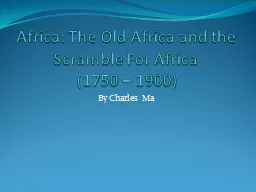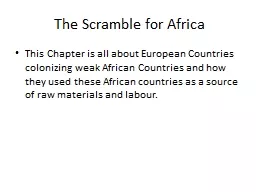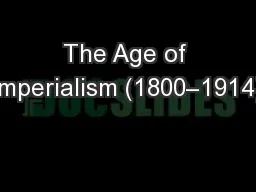PPT-Africa: The Old Africa and the Scramble For Africa
Author : cheryl-pisano | Published Date : 2017-12-25
1750 1900 By Charles Ma The Old Africa PreImperialistic Era New African States Nationalism in Africa The Zulus The Nguni people had farmed and raised cattle in
Presentation Embed Code
Download Presentation
Download Presentation The PPT/PDF document "Africa: The Old Africa and the Scramble ..." is the property of its rightful owner. Permission is granted to download and print the materials on this website for personal, non-commercial use only, and to display it on your personal computer provided you do not modify the materials and that you retain all copyright notices contained in the materials. By downloading content from our website, you accept the terms of this agreement.
Africa: The Old Africa and the Scramble For Africa: Transcript
Download Rules Of Document
"Africa: The Old Africa and the Scramble For Africa"The content belongs to its owner. You may download and print it for personal use, without modification, and keep all copyright notices. By downloading, you agree to these terms.
Related Documents














